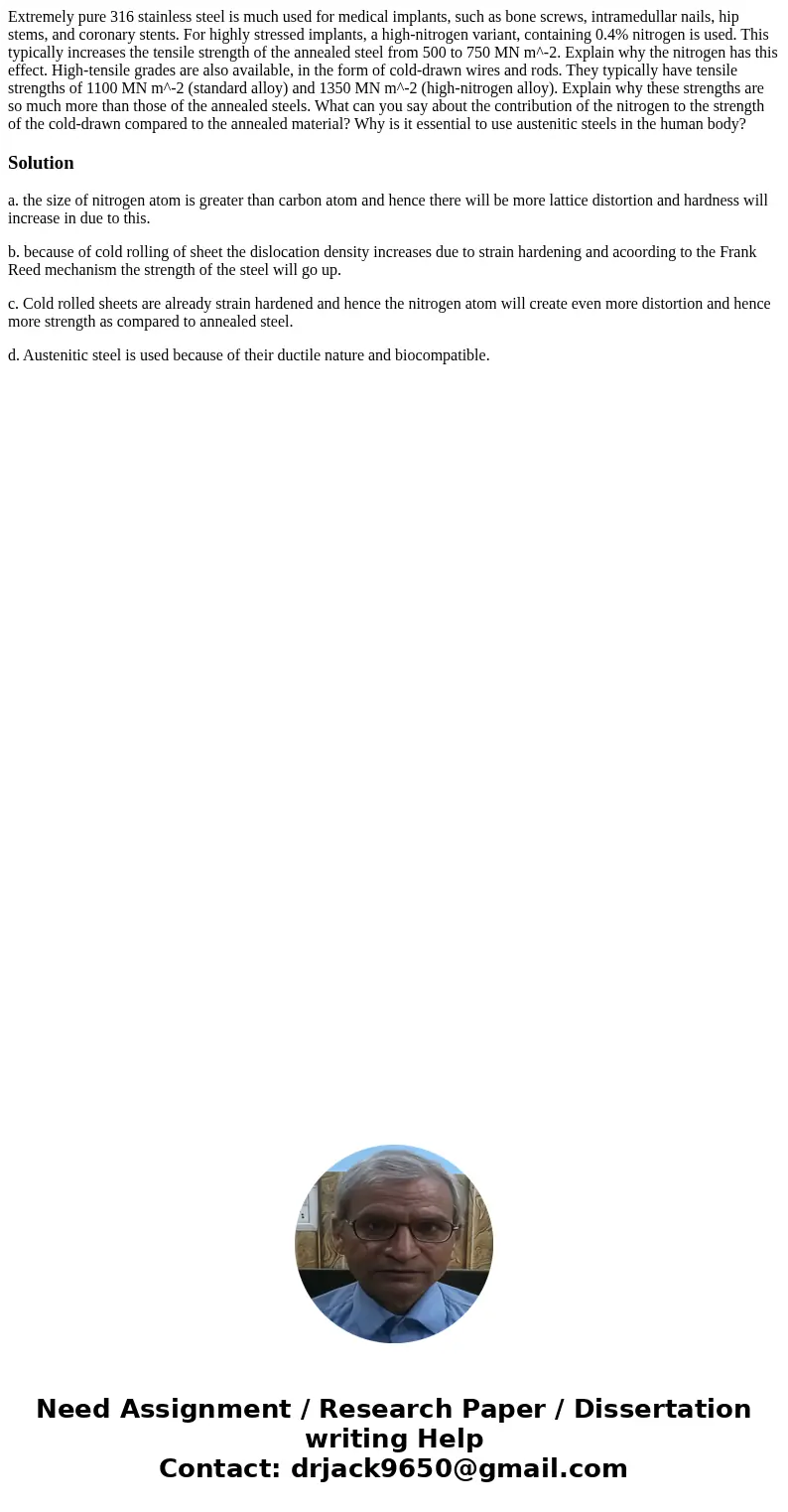Extremely pure 316 stainless steel is much used for medical
Extremely pure 316 stainless steel is much used for medical implants, such as bone screws, intramedullar nails, hip stems, and coronary stents. For highly stressed implants, a high-nitrogen variant, containing 0.4% nitrogen is used. This typically increases the tensile strength of the annealed steel from 500 to 750 MN m^-2. Explain why the nitrogen has this effect. High-tensile grades are also available, in the form of cold-drawn wires and rods. They typically have tensile strengths of 1100 MN m^-2 (standard alloy) and 1350 MN m^-2 (high-nitrogen alloy). Explain why these strengths are so much more than those of the annealed steels. What can you say about the contribution of the nitrogen to the strength of the cold-drawn compared to the annealed material? Why is it essential to use austenitic steels in the human body?
Solution
a. the size of nitrogen atom is greater than carbon atom and hence there will be more lattice distortion and hardness will increase in due to this.
b. because of cold rolling of sheet the dislocation density increases due to strain hardening and acoording to the Frank Reed mechanism the strength of the steel will go up.
c. Cold rolled sheets are already strain hardened and hence the nitrogen atom will create even more distortion and hence more strength as compared to annealed steel.
d. Austenitic steel is used because of their ductile nature and biocompatible.

 Homework Sourse
Homework Sourse